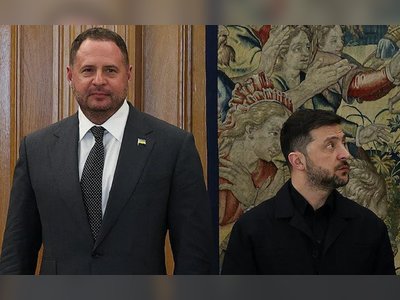
The Plight of German Nationals Abducted Abroad: A Continuing Crisis
A look into the complexities surrounding the kidnapping of Germans overseas and the intricacies of governmental responses to such incidents.
Sonja N.*, a German nurse affiliated with the International Red Cross, was abducted by armed individuals in Somalia nearly seven years ago.
Recently, a video emerged in which she appeals to both the German government and her family for action regarding her release, expressing grave concerns about her deteriorating health.
The issue of abduction involving German citizens abroad represents a significant and enduring crisis, with hundreds estimated to have been kidnapped in various countries over several decades.
However, acquiring precise and current statistics on the number of individuals still held captive remains challenging.
The most recent figures, reported in 2019, indicate that from 2010 to 2019, 143 Germans were kidnapped across 37 countries.
The highest number of abduction incidents occurred in Nigeria, followed by Afghanistan, Mexico, Syria, and Senegal.
In response to abductions, a dedicated crisis team is activated within the German Foreign Ministry.
This team coordinates efforts involving embassies, intelligence agencies, and negotiators to address the situation.
Jürgen Chrobog, who headed the crisis team from 2003 to 2005, emphasized the importance of building trust with intermediaries, crucial for ascertaining the circumstances surrounding kidnappings and the conditions for release.
Chrobog himself has firsthand experience with abduction; he was taken hostage in Yemen shortly after his retirement, with that situation reportedly resolved in a relatively short timeframe.
Individuals affected by foreign abductions encompass a diverse range, including nurses, priests, aid workers, dissidents, and tourists.
A notable case is that of the Wallert family, kidnapped by the militant group Abu Sayyaf during a vacation in Malaysia in 2000. Their abduction garnered significant international attention as journalists were permitted to document their captivity.
The family was released months later and subsequently became well-known figures in Germany.
Another case is that of Hans-Joachim Lohre, a Roman Catholic clergyman who was abducted in Mali in November 2022. He shared insights from his nearly year-long captivity, explaining his survival strategies, which included daily prayers and attempts to engage his captors in discussions about faith.
His eventual release followed extensive negotiations, although the details remain undisclosed.
Lohre acknowledged the role of local religious leaders who prayed for his liberation.
Most kidnappers are non-state actors linked to ethnic or religious groups.
However, state-sponsored abductions have also been documented, such as the case of Jamshid Sharmahd, forcibly taken from Dubai to Iran, where he was imprisoned and ultimately executed in October 2024. In contrast, Nahid Taghavi, a German-Iranian citizen, was liberated from Iranian custody in January 2025, a release attributed to public advocacy led by her daughter, Mariam Claren, through their NGO, Hawar.
Claren highlighted the contrasting diplomatic approaches between Germany, which favors quiet diplomacy, and countries like the United States and France that often pursue more public strategies.
The recent video appeal from the German nurse has ignited emotional responses and intensified discussions regarding the awareness and effectiveness of governmental actions concerning such abductions.
Claren emphasized the significance of public mobilization to keep victims in the public eye and maintain pressure on authorities, asserting that such advocacy is crucial in preventing victims from being forgotten.
Recently, a video emerged in which she appeals to both the German government and her family for action regarding her release, expressing grave concerns about her deteriorating health.
The issue of abduction involving German citizens abroad represents a significant and enduring crisis, with hundreds estimated to have been kidnapped in various countries over several decades.
However, acquiring precise and current statistics on the number of individuals still held captive remains challenging.
The most recent figures, reported in 2019, indicate that from 2010 to 2019, 143 Germans were kidnapped across 37 countries.
The highest number of abduction incidents occurred in Nigeria, followed by Afghanistan, Mexico, Syria, and Senegal.
In response to abductions, a dedicated crisis team is activated within the German Foreign Ministry.
This team coordinates efforts involving embassies, intelligence agencies, and negotiators to address the situation.
Jürgen Chrobog, who headed the crisis team from 2003 to 2005, emphasized the importance of building trust with intermediaries, crucial for ascertaining the circumstances surrounding kidnappings and the conditions for release.
Chrobog himself has firsthand experience with abduction; he was taken hostage in Yemen shortly after his retirement, with that situation reportedly resolved in a relatively short timeframe.
Individuals affected by foreign abductions encompass a diverse range, including nurses, priests, aid workers, dissidents, and tourists.
A notable case is that of the Wallert family, kidnapped by the militant group Abu Sayyaf during a vacation in Malaysia in 2000. Their abduction garnered significant international attention as journalists were permitted to document their captivity.
The family was released months later and subsequently became well-known figures in Germany.
Another case is that of Hans-Joachim Lohre, a Roman Catholic clergyman who was abducted in Mali in November 2022. He shared insights from his nearly year-long captivity, explaining his survival strategies, which included daily prayers and attempts to engage his captors in discussions about faith.
His eventual release followed extensive negotiations, although the details remain undisclosed.
Lohre acknowledged the role of local religious leaders who prayed for his liberation.
Most kidnappers are non-state actors linked to ethnic or religious groups.
However, state-sponsored abductions have also been documented, such as the case of Jamshid Sharmahd, forcibly taken from Dubai to Iran, where he was imprisoned and ultimately executed in October 2024. In contrast, Nahid Taghavi, a German-Iranian citizen, was liberated from Iranian custody in January 2025, a release attributed to public advocacy led by her daughter, Mariam Claren, through their NGO, Hawar.
Claren highlighted the contrasting diplomatic approaches between Germany, which favors quiet diplomacy, and countries like the United States and France that often pursue more public strategies.
The recent video appeal from the German nurse has ignited emotional responses and intensified discussions regarding the awareness and effectiveness of governmental actions concerning such abductions.
Claren emphasized the significance of public mobilization to keep victims in the public eye and maintain pressure on authorities, asserting that such advocacy is crucial in preventing victims from being forgotten.
AI Disclaimer: An advanced artificial intelligence (AI) system generated the content of this page on its own. This innovative technology conducts extensive research from a variety of reliable sources, performs rigorous fact-checking and verification, cleans up and balances biased or manipulated content, and presents a minimal factual summary that is just enough yet essential for you to function as an informed and educated citizen. Please keep in mind, however, that this system is an evolving technology, and as a result, the article may contain accidental inaccuracies or errors. We urge you to help us improve our site by reporting any inaccuracies you find using the "Contact Us" link at the bottom of this page. Your helpful feedback helps us improve our system and deliver more precise content. When you find an article of interest here, please look for the full and extensive coverage of this topic in traditional news sources, as they are written by professional journalists that we try to support, not replace. We appreciate your understanding and assistance.









